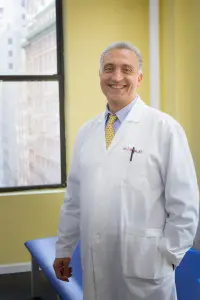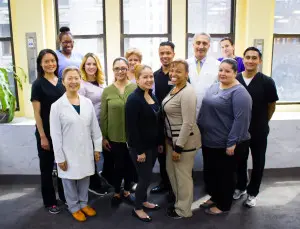
A physiatrist, or “rehabilitation physician” is expert in the study of nerves, muscles and bones. Additionally, he is a mobility expert and treats injuries and illnesses which impact the way a person moves and completes daily motor functions. His primary goal is to treat pain and physical discomfort with a non-surgical approach.
The main function of a rehabilitation physician is to treat any disability resulting from different sorts of diseases and injuries. There are great New York City physiatrists who are considered professionals in diagnosing structural defects in patients, for example, herniated disks and rotator cuff tears. They are also ideal for assessing for medical evidence of nerve injuries. For examples, sore shoulders, commonly referred to as “frozen shoulder syndrome” (possible from a tennis injury) or spinal cord complications. The focus is mainly on the development of a comprehensive plan, to put the pieces of a the patient’s life back together by following through tailor-made programs. Studies show that patients who regularly attend their physiatry sessions see significant improvement in two to four weeks.

Physiatrists commonly use their initial visit with a patient to pinpoint a specific source of an ailment. Then, they devise a treatment plan that can be implemented with the help of the rehabilitation physician’s supporting medical team. These medical teams frequently include other doctors and health professionals. For example; neurologists, surgeons, nutritionists, acupuncturists, physical and occupational therapists. By providing an appropriate, accurate and detailed treatment plan, these physicians can help patients remain active at almost any age. Their broad medical expertise and experience allows them to treat a wide variety of conditions.





